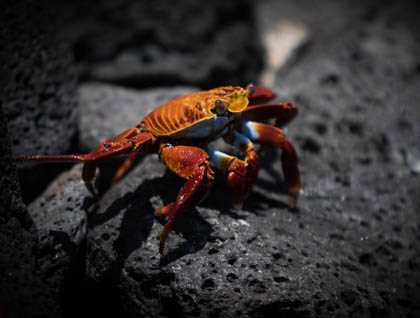After spending the whole day in Puerto Ayora yesterday, visiting the breeding center and the highlands of Santa Cruz Island, our guests gained a deeper understanding of the importance of the Charles Darwin Station and the Galapagos National Park Service. This incredible archipelago needs our help and protection, and seeing the conservation efforts in action as well as the final product of tortoises in the wild and roaming freely was very impressive.
This morning we dropped anchor in the northern part of Santa Cruz, after a few hours of navigations overnight. We disembarked early, before breakfast, to visit Dragon’s hill, and it was amazing to see dragons roaming in the wild one more time, like they did centuries ago before human impact. This wonderful experience was possible thanks to the restoration program carried out by the Galapagos National Park.
In Galapagos we don’t really have dragons, but they are represented by our iconic species of marine and land iguanas, which provide an excellent example of the biological evolution in our planet.
And for those interested in a more relax activity, we also offered a Zodiac ride to explore the coastal area of the same location. It was a very exciting excursion, because sea birds are fishing at this time of the day, and it is a great time to enjoy nature at its best.
The morning activity was already very intense and interesting, and we kept the momentum going with a deep water snorkeling at Guy Fawkes, which is a small islet, of the coats of Santa Cruz Island. This site is one of the best snorkeling sites in Galapagos for invertebrate observation, and it is known for a large aggregation of fish, and the always playful Galapagos sea lions.
After such a full morning, we returned to the ship for a well-deserved lunch. For the afternoon, we sailed towards Eden, which is located, just two hours away from the previous visitor site. This spot has lots of hidden beaches in the area, which are a perfect nesting ground for turtles, as well as a protective nursery for baby sharks, and also a feeding ground for pelicans and boobies. We were able to explore by Zodiac, observing this dense wildlife population with our cameras and binoculars.
Our final activity of the day took place onboard the National Geographic Endeavour—we circumnavigated Daphne Major. This is a tiny island volcano in Galapagos, where the finches have been extensively studied to provide us with a better understanding of natural selection.
We finish our day with a bit of rain and a beautiful sunset. More surprises await us as our exploration continues tomorrow!







